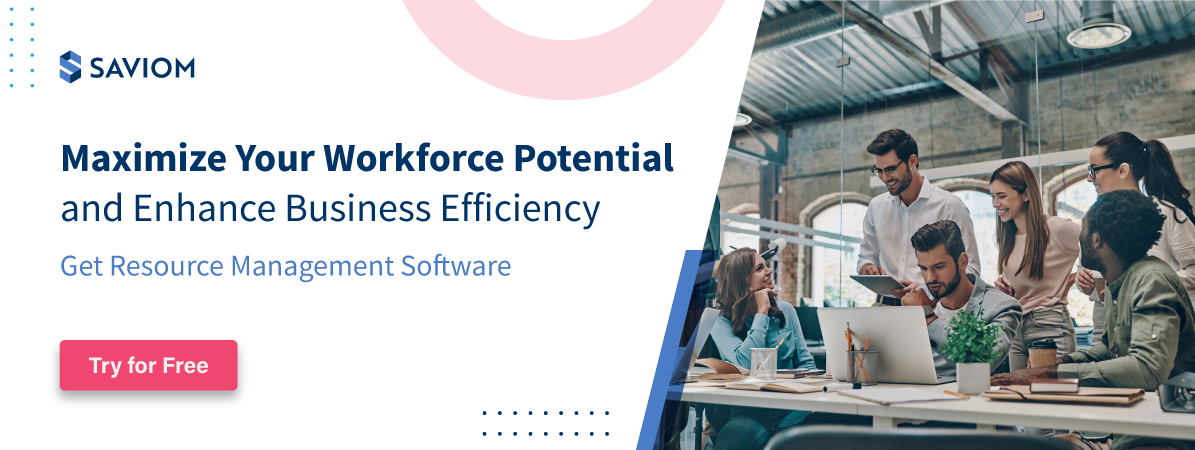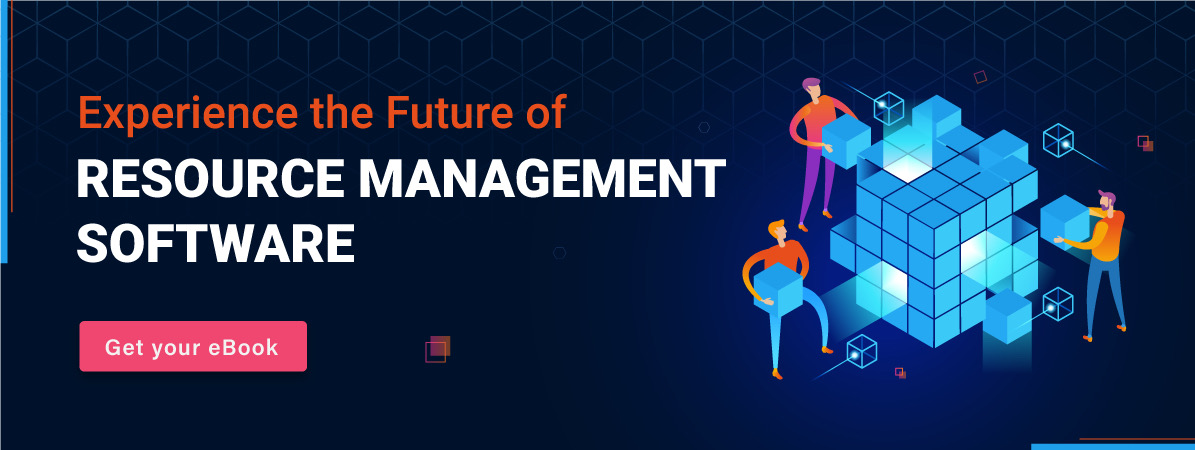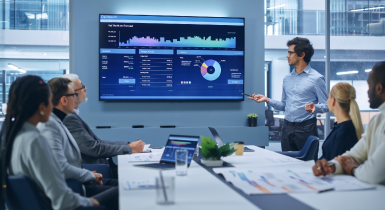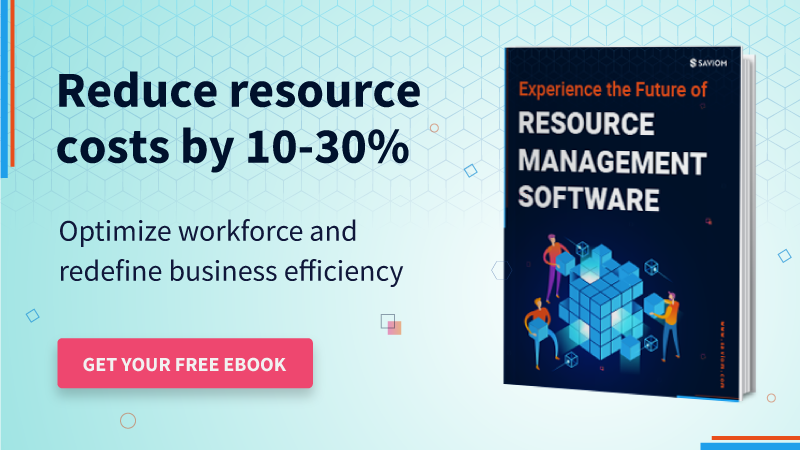Is your company prepared to welcome the next generation into your workforce?
According to Forbes,
Approximately 20% of the US workforce belongs to Gen Z, with around 65 million in total.
Generation Z will surpass their millennial cohorts in a few years, and they exhibit many different traits than the traditional workforce. Thus, understanding what motivates Gen Z at the workplace is necessary to ensure their productivity and performance.
First and foremost, they are hyperconnected to technology and have set high standards for their careers. Besides, their expectations range from challenging opportunities for growth to overall healthy work culture.
To ensure cohesive teamwork and inclusion, organizations must find ways to effectively integrate Gen Z into their multigenerational workforce, consisting of a mix of baby boomers, generation X, and millennials.
This article discusses the various ways to merge the Gen Z population into an organization’s human resources so that they can pursue a long-term career.
First, let us look at who Generation Z is and their different traits and characteristics.
Who is Gen Z, and how are they different from other generations at work?
Gen Z, colloquially known as Zoomers, refers to those born between the mid-1990s to the early 2010s. Members of Gen Z are more racially and ethnically diverse than any of their previous generations. They are also progressive and have their own opinions on various world issues.
Even though zoomers have a lot in common with millennials, they have some unique traits too. For one, they are the original digital natives who grew up in a world of smartphones and the internet. Therefore, they can easily adapt to digital platforms or technologies and pick up new software quickly. As a result, their relationship with technology may be even more instinctual than a millennial in their late 30s.
For two, gen Z is defined by competitiveness and independence. They are highly ambitious and want challenging responsibilities that will enhance their skills. They value skill development and self-improvement at work.
One of the most important traits of Generation Z is that they seek autonomy and collaboration between coworkers.
Many also want to manage their projects so that their skills and abilities can shine through. Generation X and Baby boomers worked in a traditional workforce that was hierarchical. Gen Z, however, seeks a more open-minded and approachable work culture where they are respected and valued as individuals.
Let us now look at some benefits of integrating Gen Z into your workforce.
What are the benefits of integrating Gen Z into your workforce
Generation Z brings an innovative perspective to the table and can take your organization to the next level. Along with innovation and technical prowess, they offer a plethora of benefits. Here are the most prominent ones:
Enhanced knowledge sharing and productivity
Many Gen Zs are well-versed in technology and thus can find their way around the office tool inventory without any hassle. It allows them to be more efficient and use technology to regulate mundane tasks and thus enhance their productivity. Due to their innate collaborative nature, they are also willing to be technology mentors for the baby boomers and Gen X coworkers. In turn, it helps address tech skill disparities existing in an organization.
Promotes innovative ideas and solutions
Being young and vibrant, gen Z can present innovative ideas and perspectives to help the company provide better services. They grew up in an information-driven world where they are up to date about the latest trends in the global market. Moreover, Gen Z also has creative ideas to market a project that appeals to the target audience. This helps in building brand reputation and better customer satisfaction.
Intergenerational collaboration for a future-ready workforce
As mentioned above, Generation Z has a higher technological competency compared to other generations. Thus, they can mentor seasoned employees to develop better tech skills. These senior coworkers can share their experience and knowledge and impart leadership skills. Since Gen Z is the future leader, this knowledge exchange will help their professional development. Thus, the intergenerational collaboration will enable the organization to build a future-ready workforce. The benefits reiterate the need for zoomers in your organization. Listed below are some ways to effectively include and retain them in your organization.
Read More: Productivity Tips for the Multigenerational Workforce
Ways to integrate Gen Z into your workforce
Companies need to go beyond offering monetary benefits when integrating Gen Z into the workforce. As discussed earlier, Gen Z demands challenging opportunities and cares about global and societal issues like diversity, sustainability, etc.
Keeping these in mind, organizations must get out of their comfort zone and create a work environment that meets the professional needs of Gen Z and ensure a seamless experience. Here are some ways in which Gen Z can be integrated:
Invest in a tech-enabled workspace
According to a study from Dell.Inc.,
80% of Gen Z aspire to work with cutting-edge technology.
As mentioned earlier, Generation Z is skilled in the high-tech programs used at work. In addition, they are the true digital natives exposed to the constantly evolving internet, social media, and mobile networks in their formative years. Therefore, organizations must update the technologies used at work to align with Gen zs’ personal skills and knowledge.
Moreover, research suggests:
80% of Gen Z believes that automation and technology will create a more equitable work environment.
Automation enables the proper functioning of many mundane and non-billable activities in a company.
Technologies like Artificial Intelligence and the Internet of Things (IoT) will help overcome the challenges of connectivity and productivity in workspaces.
The use of these technologies will ensure better employee engagement and efficiency. Companies that can accommodate these emerging technologies within the workplace will successfully retain Gen Z employees.
Read More: How the Internet of Things can Revolutionize your Workplace
Provide an open platform to share diverse opinions
Generation Z seeks an open-minded work environment where cross-generational employees can work cohesively and discuss their different perspectives. Thus, understanding and acknowledging their views will make them feel included, valued, and respected. Therefore, employers should ensure they foster an open work environment.
To achieve the same, they can conduct brainstorming sessions, group discussions on work and nonwork-related topics, etc. This will give Gen Z a fair chance to voice their opinions and allow the older generations to understand their stance, appreciate their perspectives, and collaborate better. These practices will also help employers to bridge the intergenerational barrier effectively.
Promote direct communication and instant feedbacks
Although Gen Z thrives on technological intervention, they also feel in-person communication is an essential aspect of work culture. Thus, instead of using collaboration and messaging apps to convey sensitive or essential information, Gen Z would prefer synchronous communication with their coworkers. It could be via in-person meetings, telephone calls, video conferencing, coffee break/ water cooler conversations, etc. Thus, organizations should promote and facilitate direct communication at the workplace.
Moreover, as stated earlier, Gen Z is highly ambitious, fast-learners, and seeks to climb the corporate ladder faster. That’s why managers should exchange honest feedback with them regularly. Besides, in the earlier days, performance reviews and feedback sessions were either conducted annually or when things went wrong. Therefore, employers should revisit this approach and promote a more continuous review cycle to constantly review their works, point out areas of improvement, and acknowledge their achievements. These practices will not only help Gen Z grow professionally but also enhance their engagement in the workplace.
Read More: What is Employee Performance Management and Why It is Important
Influence and inspire; don’t direct and dictate
Generation Z has moved far from the traditional leadership approach of director and dictatorship. Instead, they look up to the leaders who identify their potential and push them to reach greater heights. In simple words, Gen Z expects leaders to inspire and influence them rather than constantly dictating ways to execute a task which hinders their creativity and skill development, eventually disengaging them. Instead, this generation wants to experiment, implement their ideas, make an impact, see changes happen immediately, and grow.
Thus, managers should follow an autonomous approach and avoid micromanaging the Gen Zs. Instead, offer them opportunities where they can take ownership of their work. By providing proper guidance and practicing autonomy, Gen Z will be motivated to take new roles and responsibilities, leading to better professional growth.
Provide individual development plans for professional growth
Since Gen Z is highly ambitious, they intensely desire self-improvement. Since individual development plans are specific to an employee based on their skill set, it helps achieve their professional growth. It is mainly a partnership between an employee and supervisor which involves continuous feedback and preparation.
These Individual development plans will help supervisors better understand Gen Zs professional aims, strengths, and development needs. Moreover, managers can align them with the business goals and mission, a win-win for both the firm and the new workforce. When Gen Z’s career trajectory is looked after, they will feel more valued and exhibit better engagement and drive at the workplace.
Foster work flexibility for a healthy work-life balance
When it comes to work-life balance, younger generations are likely to have higher expectations. They know that it is reasonable to work alternative hours or remotely and still be successful. Therefore, leaders should offer flexibility at work to attract this new talent.
42% of Gen Z workers make work-life balance, working from home, and flexible vacation time a top priority when looking for a job.
Thus, letting them choose their working hours instead of a 9 to 5 shift increases their productivity and engagement. It also enables them to balance professional and personal time, thus giving them space to rejuvenate themselves. Therefore, companies should offer Gen Z benefits such as paid time off, medical insurance, and mental-health days.
Read More: How Resource Management Facilitates a Healthy Work-Life Balance
Practice reverse mentoring for a collaborative workspace
Reverse mentoring is an excellent tool to reflect an open work environment. It is the opposite of traditional mentoring. Here, the younger and experienced employees are paired together and mentor each other. Younger employees can give insights on the latest technology and global trends to experienced ones. The seasoned employees can provide insight into their industry, domain knowledge, and leadership skills and guide Gen Z workers in their career plans.
Reverse mentoring will create a more open-minded and non-traditional work environment which Gen Z looks forward to in a workplace.
In addition, it will make the organization more inclusive, diverse, and collaborative for different generations.
Following the ways mentioned above, you can seamlessly integrate Gen Z into the workspace and provide a holistic experience.
How can Resource Management Software seamlessly integrate Gen Z into your workforce
As we have already discussed, Gen Z is constantly looking for various experiences and learning new skills. Resource Management software can help in maintaining the skill inventory. Managers can ensure that they do not work on one project for an extended period and are given ample opportunities to acquire multiple skills. As a part of their IDP, they can be allocated to attend a certain number of training sessions per year. Resource management software will pre-book them against their training and other career development activities and mark them unavailable during scheduling.
Conclusion
Generation Z has an incredible amount of drive, talent, and ambition to bring to the table.
Like their predecessors, Gen Z has distinct values, skills, and perspectives. They have the potential to use innovation and technology to help your company stay relevant and up-to-date in the changing times.
Moreover, they are willing to go the extra mile to grow and progress quickly to make an everlasting impact on the company.
The strategies mentioned above will help you effectively integrate the Gen Z workforce into your organization. So, recognizing their motivations and strengths will help nurture their talent to benefit both employees and employers.
How do you plan to include Gen Z into your workforce?
The Glossary
Read More: Glossary of Resource Workforce Planning, Scheduling and Management
The SAVIOM Solution
SAVIOM has over 20 years of experience helping multinational clients manage their resources efficiently and effectively. With over 20 years of experience, this Australian-based MNC has a global presence across 50 countries and has helped 100+ clients meet their specific business goals. Saviom also provides tools for project portfolio management, professional service automation, and workforce planning software. So, SAVIOM can help your business establish an efficient system geared towards your specific business challenges.












